Bike Touring: An Obsession
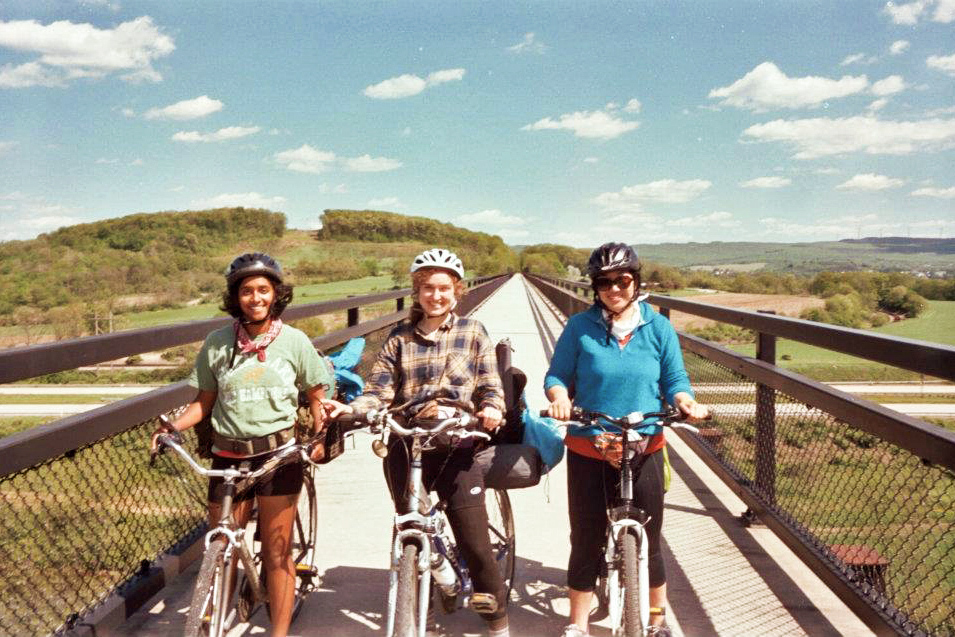
Bike Touring
An Obsession
Sam and Shirley rolled up in a silver minivan. The 80-year-old couple inched out of the car and waved us over. The opened their trunk, loaded our bicycles and gear, and drove us up a thousand-foot mountain on a windy gravel road while joking that Sam, who was driving, was legally blind.
That night, they fed us a simple meal grown from their garden. They told us about all the people they’d met: the European couple biking with a baby in a trailer, the scraggly young men on mountain bikes who wore backpacks, the retirees, and the people like us, who had just enough money for the right gear, but were still new to the game. “A hundred bike tourists, a hundred ways to bike tour,” they said. We stayed in their guest cabin and pored through the guestbook, filled with art from other bicycle tourists who had stopped there along their ride.
I often think about how bike touring is such an ideal form of travel, and part of that is, to me, how individualized it can be.
I met Sam and Shirley on a bike tour from San Diego to Montreal. Since then, I’ve done a few week-long trips with friends, solo trips to cabins for just a night, and recently bicycled across India over four months. I often think about how bike touring is such an ideal form of travel, and part of that is, to me, how individualized it can be.
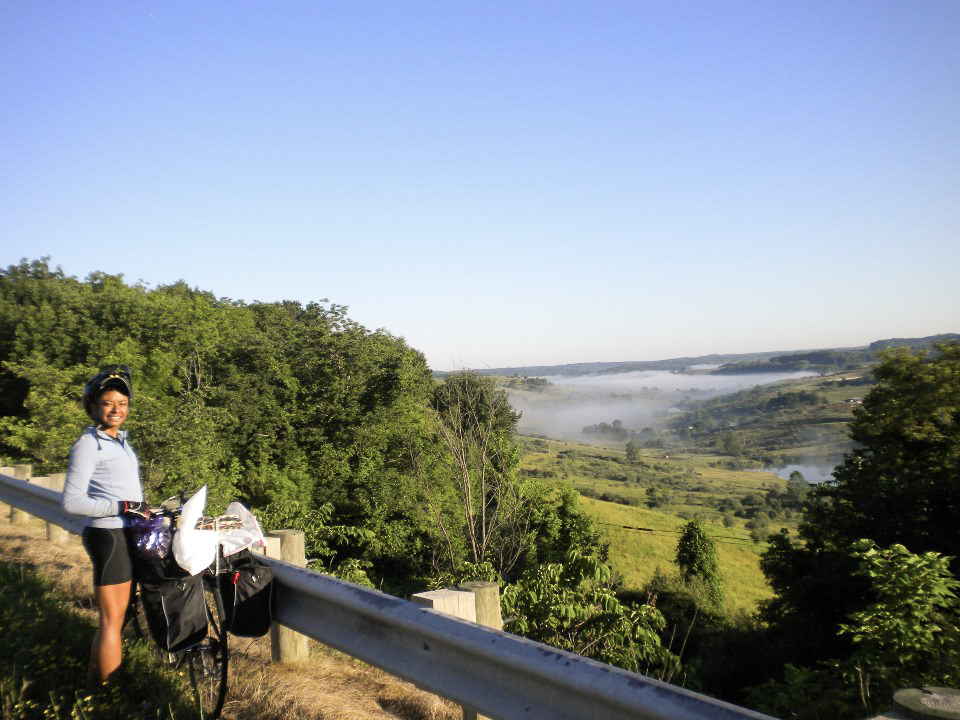
One early morning in Central Pennsylvania with Sheena, Mary Ann’s first touring partner.
I’m a queer brown woman. I often don’t relate to mainstream bicycling culture in the US, which can range from competitive racers to middle-aged-men with too much money to spend. Most of the time, I want to do my own thing, get to places where I don’t have to interact with anybody, and do whatever the fuck I want: scream, make a fire, drink tea, and play music too loud. I’m into bike touring for the nature, the views, the exercise, the solitude, and for the massive quantities of food I get to eat on a daily basis. But everyone’s motivation is different. Even my reasons for touring vary depending on the circumstances.
I’m a queer brown woman. I often don’t relate to mainstream bicycling culture in the US, which can range from competitive racers to middle-aged-men with too much money to spend.
When I biked from Pittsburg to DC, I organized four friends, and even my younger brother, to come with. I wanted to share my passion with them, I wanted it to be a fun social experience. Biking with other people was harder, and a lot more complicated than biking solo, but the comradery formed by slow-rolling uphill on a dirt path was like nothing else.

Grins and film grain – The Great Allegheny Passage and C&O Canal line up to form a bike path between Pittsburgh and Washington DC, which Mary Ann has biked with friends twice.
On my recent bike tour in India, I found cycling to be such a small subculture that cyclists treat each other like extended family. I didn’t experience the downsides of what I’ve seen in bike culture in the US: the competition, the bravado over who has the best gear, the mansplaining over bike repair.
And so in India, I was drawn to cyclists. I wanted to interact with as many as I could; I wanted to find out what they had to teach me and share with them what I loved about bike touring.
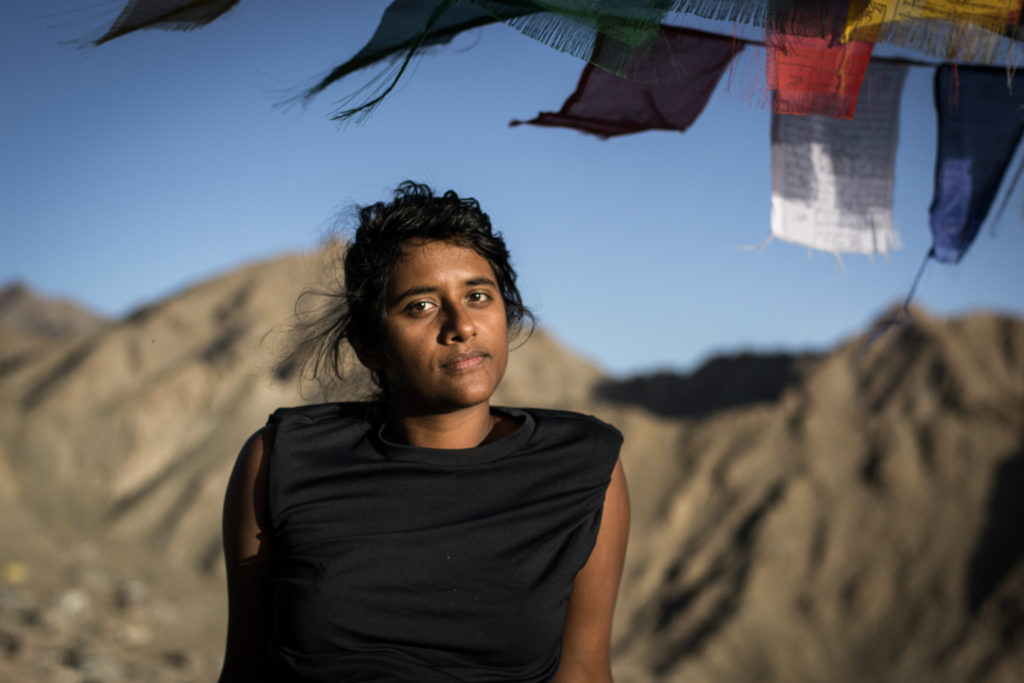
The tour began in Ladakh, high up in the Himalayas – portrait of Mary Ann by her India touring partner, Canadian photographer Daniel Baylis
When I bike, it feels like every minute is the only thing that exists, like there’s no point in living any other way, like the whole world was built around this experience.
It was in India that I came to fully embrace my obsession. When I bike, it feels like every minute is the only thing that exists, like there’s no point in living any other way, like the whole world was built around this experience. And there are certain ways that biking feels special, distinct, from something like a road trip or backpacking.
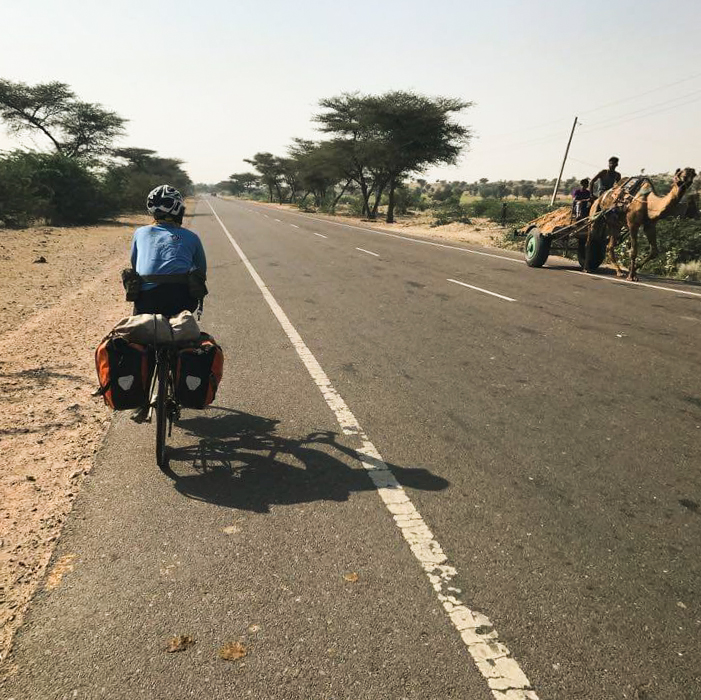
In the deserts of Rajasthan, India, camel cart is a common form of transportation.
When I bike tour, I carry everything on my bicycle. I put my gear in saddlebags, which hook onto racks on the bike. I wear a hip belt, where I keep my phone and wallet, but I don’t have any significant weight on my body. I feel, in fact, weightless. I can bike with no hands, I can dance around, I can stretch my arms and do side dips if the road is just right.
People think it’s impressive, tough even, that I’ve biked over 10,000 miles in the last five years. And yet, bicycling doesn’t feel hard to me, for the most part. Somehow, by sitting for an extended period of time, I can travel. Yes, I’m moving my legs, but the bike I ride has gears. This means that when I’m going up a hill, I can keep my pedaling cadence and heartrate fairly even. If I’m going up a mountain, it’s a little trickier, and I might stop and take breaks to catch my breath. But bicycling doesn’t require huge physical strength. It does require a strong dose of patience, humility, and resilience, but I have found that even on the hardest mountains, I can get there if I just keep going.
People think it’s impressive, tough even, that I’ve biked over 10,000 miles in the last five years. And yet, bicycling doesn’t feel hard to me, for the most part.
Because I like solitude, I take country roads through small towns and villages. Here, strangers become curious and enthusiastic cheerleaders. But this is my choice. I know cyclists who stay on busy main roads because those roads are often well-maintained and fast. I also know cyclists who ride gravel primarily, who meander through forest-service roads where they might not see someone for days. These are all choices, and this is the beauty of bike touring to me. I can change my strategy depending on my mood. If I want to be in the middle of nowhere, I can be, if the next day, I want to ride hella fast or talk to lots of people, I can do that too.
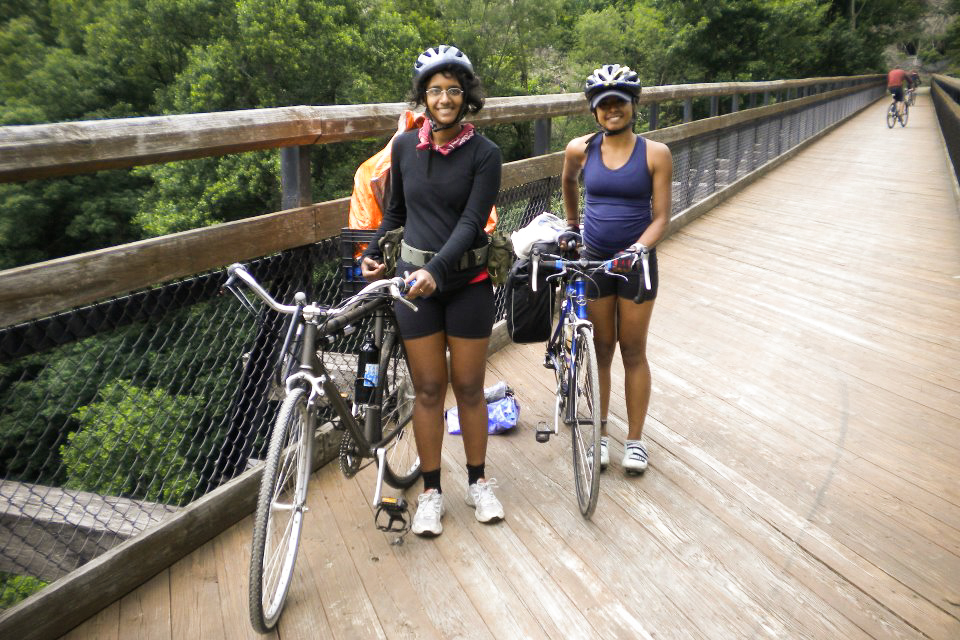
Biking from New Jersey to Nashville.
The nature of the activity itself offers a semblance of safety for me. Because I generally stick to paved roads, I know that eventually, a car will appear. I’ve run out of water in the desert and people have given me a fresh bottle; I’ve had bike break-downs that I couldn’t fix and multiple people have stopped to help. Unless you’re riding trails as a bikepacker, most bike tourists don’t get so far away from civilization that if something goes wrong, they can’t flag a car down.
When asked how I got into bike touring, I always point to a sunny weekend in college, when a dozen friends biked to a friend-of-a-friend’s house on the beach. It was a sixty mile ride. A few people got flats, a few people ran out of water. We were going slow and arrived after dark without bike lights. We didn’t know what we were doing, but we didn’t have to.
Bike touring is such a malleable activity. It just involves riding your bike for a while. There are no wrong ways to tour: you can ride to your friend’s house a few towns over, pedal for a day and get a hotel room, go on a week-long supported tour, or go unsupported and figure it out as you go along. No matter how much experience you have, unexpected things will happen along the way. You’ll figure it out, and you’ll learn what you need to go forward.
Mary Ann Thomas is a New Jersey-born-and-raised queer South Asian traveler. She writes about her adventures as a travel professional and long-distance bike tourist. See more of her writing on Postcards from MAT, and find her on Instagram and Facebook.
Be the first to comment